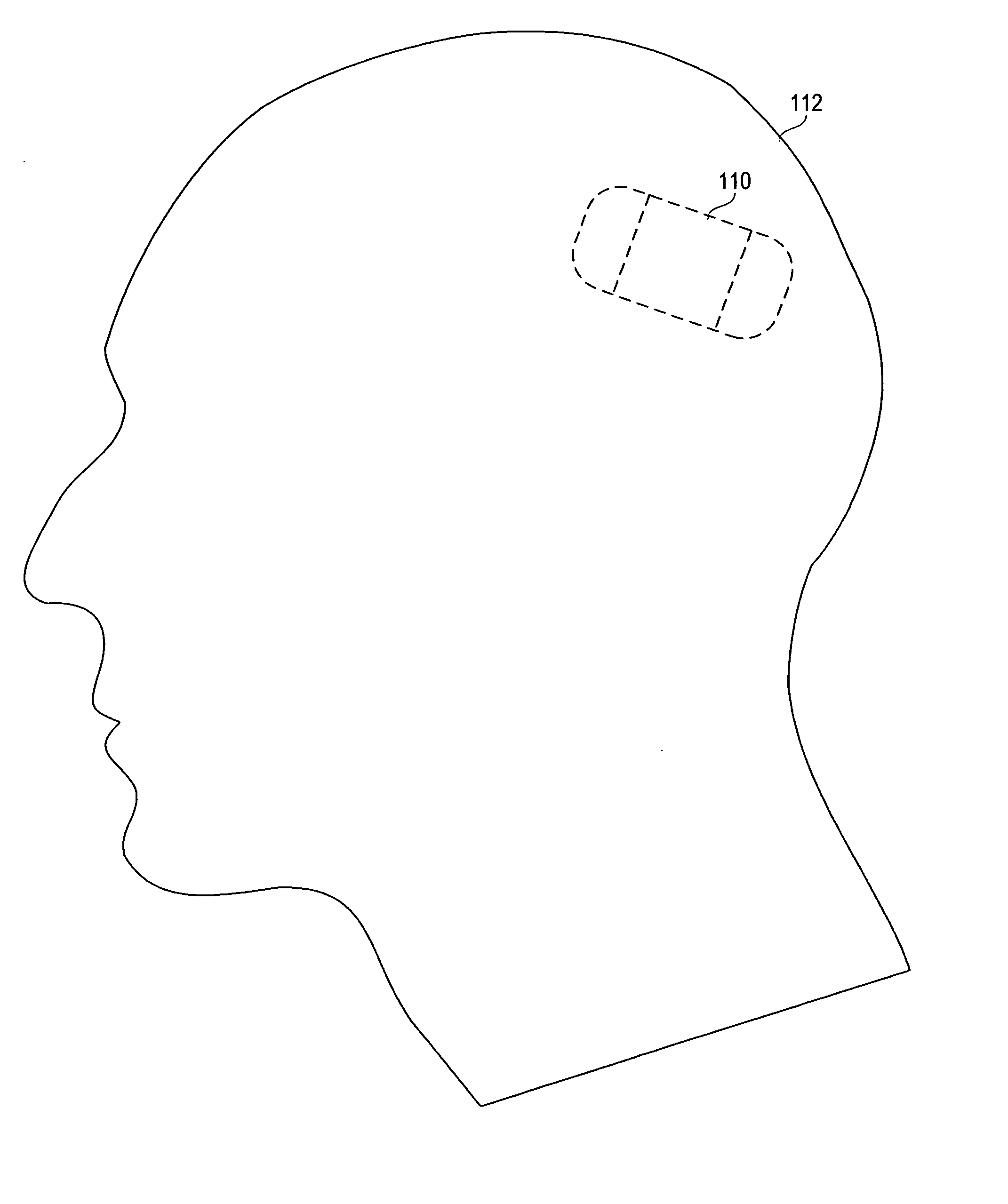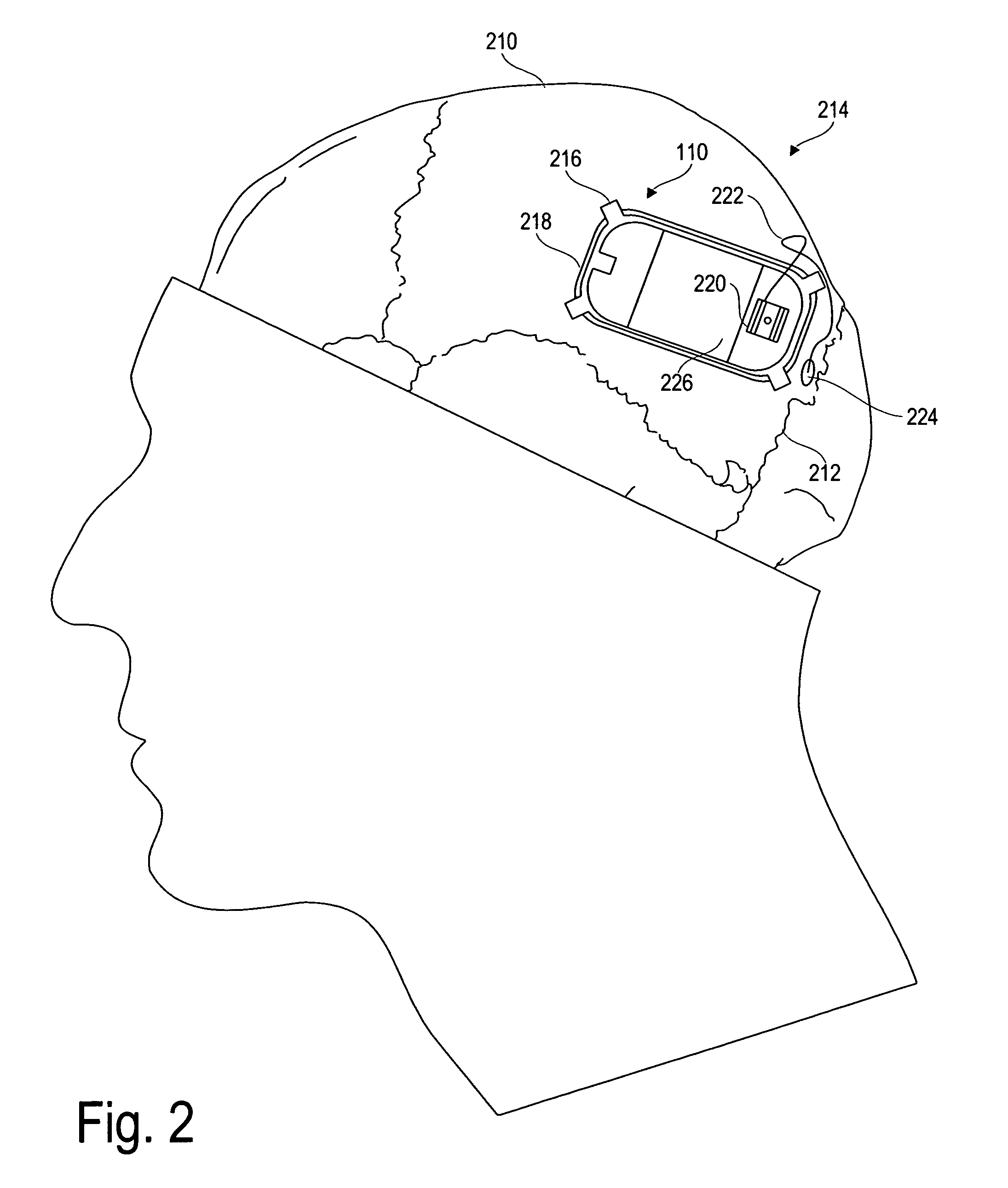Seizure therapy and suppression using an implantable device
a technology of implantable devices and seizure therapy, applied in electrotherapy, therapy, etc., can solve the problems of physical impairment, deterioration of other brain functions (including cognitive function), and frequent limitation of sufferers, and achieve the effects of reducing the number of patients
- Summary
- Abstract
- Description
- Claims
- Application Information
AI Technical Summary
Benefits of technology
Problems solved by technology
Method used
Image
Examples
Embodiment Construction
[0042] The invention is described below, with reference to detailed illustrative embodiments. It will be apparent that a system according to the invention may be embodied in a wide variety of forms. Consequently, the specific structural and functional details disclosed herein are representative and do not limit the scope of the invention.
[0043]FIGS. 1-22 describe, among other things, systems and methods for detecting various types of activity and conditions, including but not limited to periods of high ictal activity and periods of low ictal activity. Exemplary scenarios for employing targeted responsive therapy and suppressive therapy in response to such detections, where such therapy is in the form of electrical stimulation and otherwise, are set forth thereafter.
[0044]FIG. 1 depicts an intracranially implanted device 110 according to the invention, which in one embodiment is a small self-contained responsive neurostimulator. As the term is used herein, a responsive neurostimula...
PUM
 Login to View More
Login to View More Abstract
Description
Claims
Application Information
 Login to View More
Login to View More - R&D
- Intellectual Property
- Life Sciences
- Materials
- Tech Scout
- Unparalleled Data Quality
- Higher Quality Content
- 60% Fewer Hallucinations
Browse by: Latest US Patents, China's latest patents, Technical Efficacy Thesaurus, Application Domain, Technology Topic, Popular Technical Reports.
© 2025 PatSnap. All rights reserved.Legal|Privacy policy|Modern Slavery Act Transparency Statement|Sitemap|About US| Contact US: help@patsnap.com



